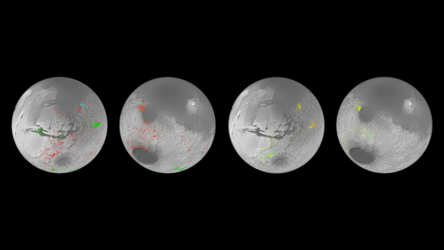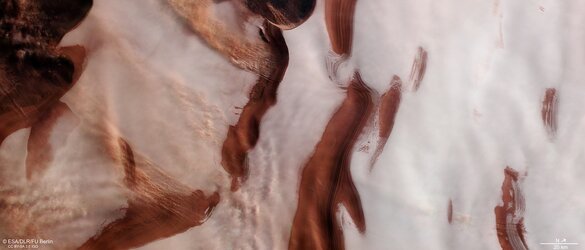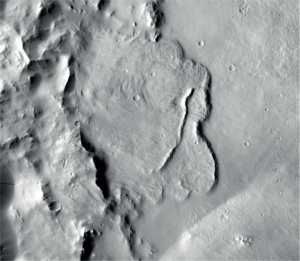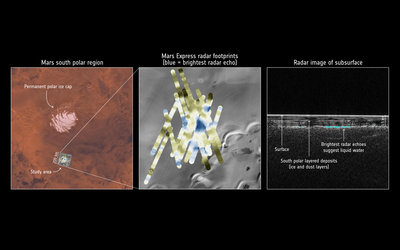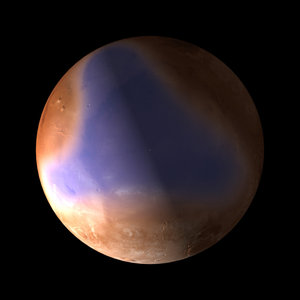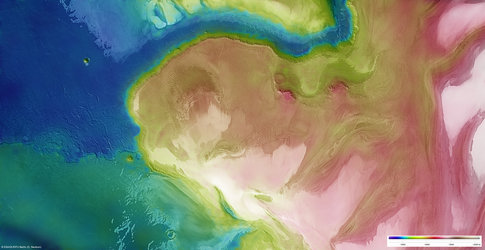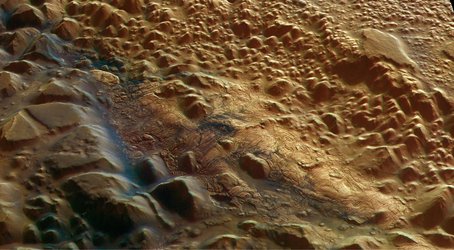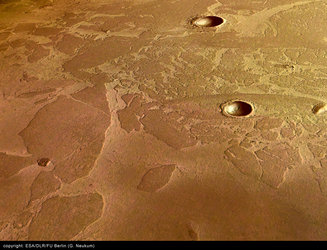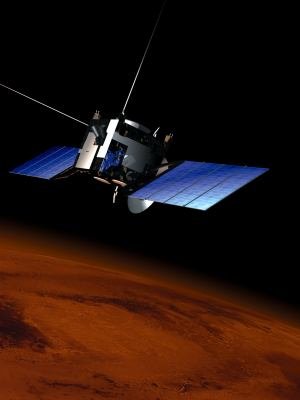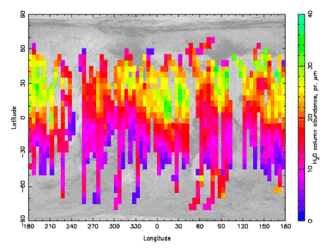Was there water on early Mars?
For a number of decades, astronomers have wondered about water on Mars. Thanks to ESA's Mars Express, much of the speculation has been replaced with facts.
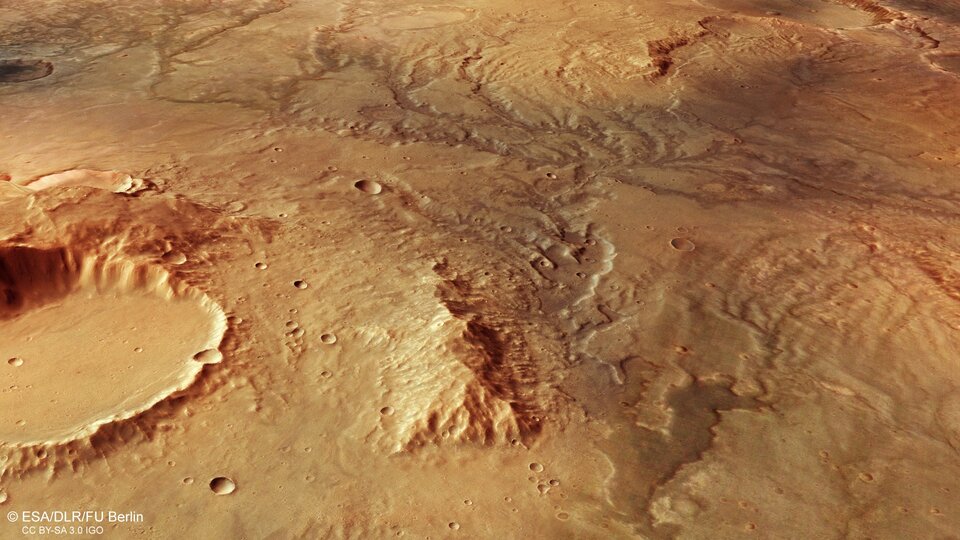
Since the Viking missions of the 1970s, planetary scientists have changed their perception of water on Mars several times, passing from the picture of a dry planet to that of a warmer and wetter one. Mars Express's data are now shedding a new light on the complex issue of the evolution of water on the Red Planet.
All seven of Mars Express' instruments are helping us unravel Mars' watery history – answering questions such as: where was the liquid water on Mars? where did it go? how much still exists? Whilst MARSIS, OMEGA and HRSC have been particularly useful in understanding the history of water on the surface, ASPERA and SPICAM are revealing how water has been lost to space over its history.

MARSIS has probed beneath the surface of Mars to depths of thousands of metres to detect abundant water ice in the polar regions. It has completely changed our understanding of the subsurface, including finding a buried crater that may contain a thick layer of water-rich ice.
OMEGA detects minerals on the surface of Mars, which helps reveal the history of Martian water, demonstrating, for example, that water could have been stable on Mars' surface but not for very long.
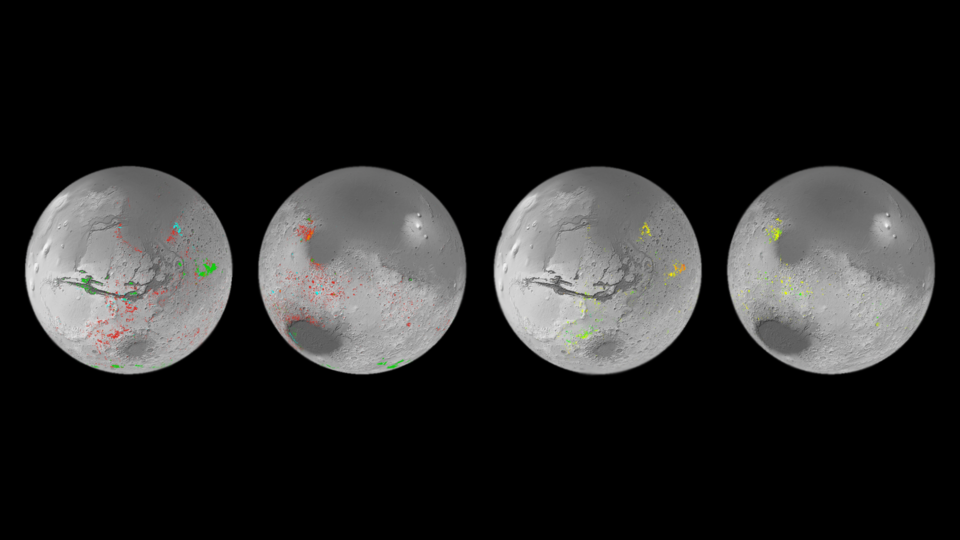
HRSC images Mars' surface in high resolution, revealing valleys that have been carved out by glaciers and flowing liquid water, rough surfaces that are footprints of floods, and signs of buried glaciers.
Studies using SPICAM data revealed that the process by which water moves through and leaves Mars’ atmosphere is shaped by seasons and storms. Another study using ASPERA data showed that the Sun’s radiation may play a surprising role in the escape of Mars' atmosphere, including the water within.
At the end of this article are links to just some of our previous stories detailing Mars Express' revelations regarding the history of water on Mars. Discover even more past articles here.















 Germany
Germany
 Austria
Austria
 Belgium
Belgium
 Denmark
Denmark
 Spain
Spain
 Estonia
Estonia
 Finland
Finland
 France
France
 Greece
Greece
 Hungary
Hungary
 Ireland
Ireland
 Italy
Italy
 Luxembourg
Luxembourg
 Norway
Norway
 The Netherlands
The Netherlands
 Poland
Poland
 Portugal
Portugal
 Czechia
Czechia
 Romania
Romania
 United Kingdom
United Kingdom
 Slovenia
Slovenia
 Sweden
Sweden
 Switzerland
Switzerland





























